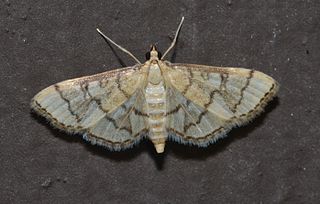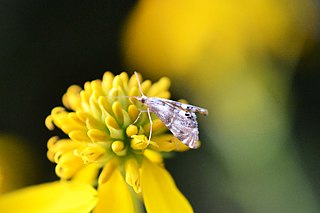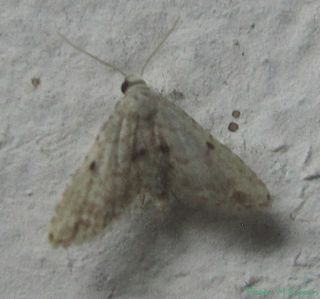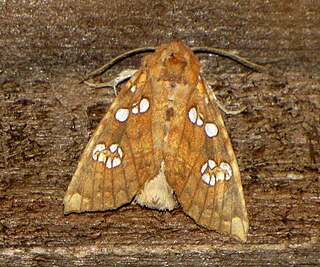
Crambidia is a genus of moths in the family Erebidae. The genus was described by Packard in 1864.

Euchaetes is a genus of moths in the family Erebidae. It was described by Thaddeus William Harris in 1841.

Pygarctia is a genus of moths in the family Erebidae.

Aulacodes is a genus of moths of the family Crambidae. The genus was first described by Achille Guenée in 1854.

Blepharomastix is a genus of moths of the family Crambidae described by Julius Lederer in 1863.

Eudonia is a large and widespread genus in the grass moth family (Crambidae), subfamily Scopariinae. There is no common name for the roughly 250 species placed here; new species are still being described regularly. Although the genus was proposed early in the 19th century, many of these moths were for a long time retained in Scoparia, the type genus of the subfamily and a close relative of Eudonia. A few small genera have been proposed for separation from Eudonia, but given the size of this group this is not particularly convincing; thus, all are retained here pending a comprehensive phylogenetic review.

Petrophila is a genus of moths of the family Crambidae. The genus was described by Lansdown Guilding in 1830.

Araeopteron is a genus of moths of the family Erebidae. The genus was erected by George Hampson in 1893.

Cirrhophanus is a genus of moths of the family Noctuidae. The genus was erected by Augustus Radcliffe Grote in 1872.

Palpidia is a genus of moths in the family Erebidae. The genus was erected by Harrison Gray Dyar Jr. in 1898.

Papaipema is a genus of moths of the family Noctuidae. The genus was erected by John B. Smith in 1899.

Harrison Gray Dyar Jr. was an American entomologist. Dyar's Law, a pattern of geometric progression in the growth of insect parts, is named after him. He was also noted for eccentric pursuits which included digging tunnels under his home. He had a complicated personal life and along with his second wife he adopted the Baháʼí Faith.
Cacotherapia is a genus of snout moths. It was described by Harrison Gray Dyar Jr. in 1904 and is known from the United States, Guatemala, Mexico, and Panama.
Rhabdatomis zaba is a moth in the subfamily Arctiinae. It was described by Harrison Gray Dyar Jr. in 1907. It is found in Mexico.

Rhabdatomis cora is a moth in the subfamily Arctiinae. It was described by Harrison Gray Dyar Jr. in 1907. It is found in French Guiana, Panama and Costa Rica.
Rhabdatomis dognini is a moth in the subfamily Arctiinae. It was described by William D. Field in 1964. It is found in Mexico.
Rhabdatomis extensa is a moth in the subfamily Arctiinae. It was described by William D. Field in 1964. It is found in Colombia.
Rhabdatomis fasseli is a moth in the subfamily Arctiinae. It was described by William D. Field in 1964. It is found in Colombia.
Rhabdatomis knabi is a moth in the subfamily Arctiinae. It was described by William D. Field in 1964. It is found in Mexico.

Acraga is a genus of moths of the family Dalceridae.














